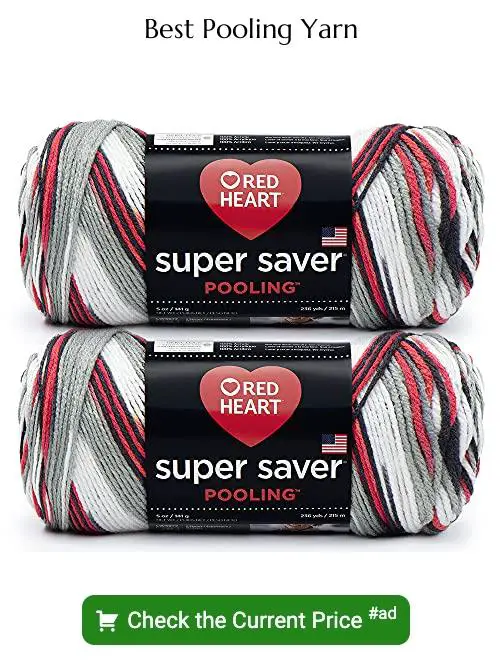Pooling yarn is a technique used in knitting and crocheting that creates an intentional color pattern by aligning the colors of variegated yarn.
Pooling, in the world of yarn crafts, refers to the technique of manipulating the colors in a variegated skein of yarn to create specific patterns when crocheted or knitted. This method is often used to create beautiful, colorful designs in projects without the need for multiple skeins of yarn in different colors.
The patterns emerge from the strategic placement of the colors in the variegated yarn. This article will delve into the details of pooling, including types of pooling, how to achieve it, and tips for perfecting your pooling technique.
Key takeaways:
- Pooling yarn creates intentional color patterns using variegated yarn.
- Factors that influence pooling include yarn choice, stitch count, tension, and pattern.
- Gradual color transitions and longer color repeats work best for effective pooling.
- Different stitches, like single crochet or garter stitch, can induce color pooling.
- Practice, experimentation, and patience are key to mastering color pooling.
Definition of Pooling in Yarn

Pooling in yarn refers to the patterned effect created as colors shift in variegated or multicolored skeins of yarn. This occurrence is generally unintentional and the result of repeating color sequences common in dyeing techniques. The visual results of pooling can range from a blotchy, random distribution of color to a recognizable “argyle” or “plaid-like” pattern.
The effect of pooling is largely influenced by these key factors:
- Yarn choice, particularly variegated or multicolored options, can contribute to distinct color shifting.
- Stitch count in each project row, where increasing or decreasing can alter color alignment.
- Tension and yarn strand usage, with looser or tighter stitching techniques affecting color distribution.
- Crochet or knitting pattern employed, with some designs more likely to emphasize pooled color sections.
Understanding these factors can lead to controlling the pooling effect, mastering techniques to achieve desirable color patterns in yarn crafting projects.
Detailing Color Pooling in Yarn Crafting

Color pooling occurs when consistent color repeats in variegated yarns come together to form an unintended pattern. This phenomenon manifests differently in knitting, crochet, and weaving projects due to the unique stitches and techniques involved in each.
To understand the concept better, it’s crucial to note that not all yarns pool. Variegated yarns with short color repeats often pool in a somewhat organized manner, creating fascinating abstract patterns. In contrast, painted or hand-dyed yarns with longer, more irregular color repeats tend to pool in a more randomized, painterly effect.
The excitement about pooling arises as predictability can be introduced. With the right techniques, crafters can manipulate variegated yarns to pool colors, forming intentional, repeating patterns such as argyle or plaids.
By adjusting your gauge – the number stitches and rows in a particular measurement – you can change the way colors pool. Making your stitches looser or more tight can shift the color along the row.
Anyone keen to explore the magic of pooling can experiment by:
- Take a swatch with your desired stitch to test for pooling.
- Adjust gauge accordingly to influence the pattern.
- Use different stitch methods to explore intricate color pooling.
- For complex patterns, consider a grid system to visualize the desired pattern.
Whether deliberate or accidental, color pooling adds another layer of depth and creativity to yarn crafts. Embrace this unique phenomenon and explore possibilities to enhance your craft projects this way.
Choosing the Right Yarn for Effective Pooling

Selecting yarn with long color transitions can lead to more successful pooling. These types offer gradual changes between hues, resulting in a more gradient-like effect in poolings.
Variegated yarns with shorter color repeats, on the contrary, might not showcase the phenomenon as effectively, causing colors to disperse more randomly throughout the project.
Experimentation is key as every skein and brand varies. Testing out small swatches before initiating larger projects is recommended to preemptively judge the pooling potential of a particular yarn.
Consideration of fiber content is also essential. Synthetic fibers often hold color differently than natural fibers, which could influence the overall appearance of pooling.
Checking yarn thickness is crucial. Contrary to a common misconception, both thin and thick yarn can pool. The difference lies in how color sequences distribute, with thicker yarn often displaying bolder shifts between colors.
Choose a yarn with color changes that match the stitch count. If the number of stitches in a row corresponds to the length of a single color on the yarn, it increases the chances of intentional pooling.
In fact, manipulating tension can greatly affect outcomes. A tighter or looser grip on the yarn can alter stitch length, thus changing the way colors pool. Absolute consistency in tension is vital to maintain uniform pooling throughout your project.
Lastly, remember to adjust expectations. Pooling is inherently unpredictable. While you can take steps to control it, the final outcome might still hold some surprises.
Remember, knowledge and practice are your best allies in mastering the art of pooling in yarn projects. Don’t be afraid to experiment and approach this craft methodically.
Role of Yarn Weight and Color Changes in Pooling

Yarn weight is paramount to achieving a desired pooling pattern. A heavy-weight yarn may result in larger, more noticeable pools, while finer yarns possess subtler transitions and patterns. The trick is to balance the density and drape of fabric with the formation of the color pools.
Variations in color length within the yarn ball also play an intrinsic role. Alterations in color change frequency – whether abrupt or gradual – can drastically affect your pooling results. Hence, before embarking on your project, assess the color lengths in your yarn.
Often, it’s advisable to adjust your stitch density (either tighter or looser) based on the color length in the yarn. For instance, with short color lengths, work loosely to allow for color pooling, while for longer color blocks, tighter stitches may generate a more pronounced pooling effect.
Also, keep in mind that depending on the length of the color repeats, different pattern styles might emerge, from spot-dye to variegated. Understanding how these changes map onto your stitches can be critical for a successful pooling project.
Lastly, don’t forget to perform a gauge swatch before starting your project. This will allow you to observe how the colors pool with your chosen stitch and yarn weight, giving you the opportunity to make any necessary adjustments.
Understanding the Effects of Pooling On Knitting and Crochet
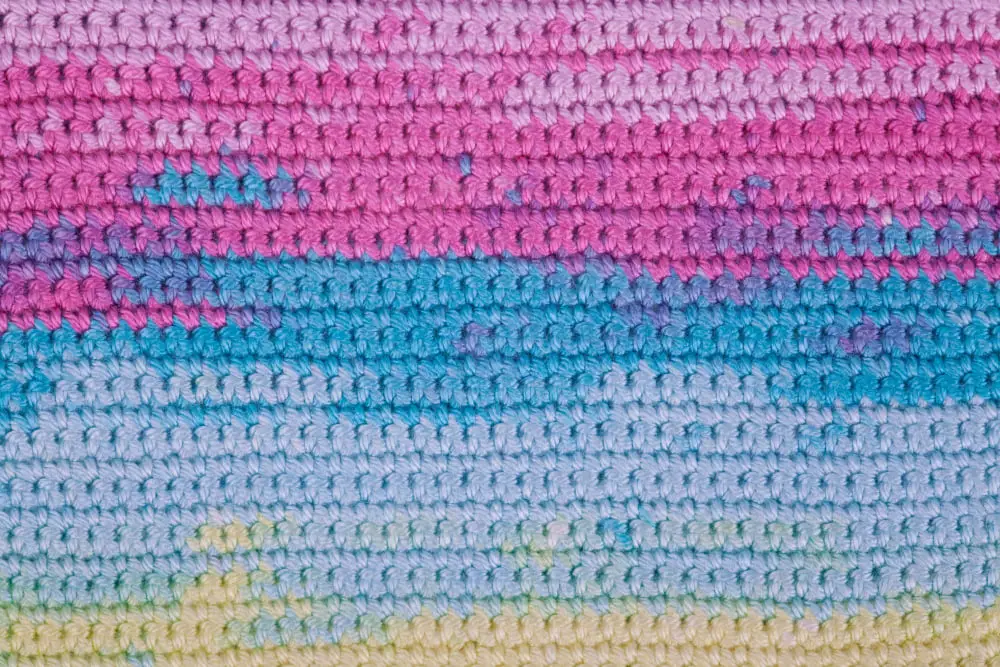
Pooling in knitting or crochet can drastically influence the final look of the project. This technique allows the yarn colors to create distinct and fascinating patterns that add contrast and visual interest.
Firstly, pooling can introduce an unexpected design element to your work. Given the right circumstances, the variegated yarn can pool into a stunning argyle or plaid-like pattern.
Secondly, in cases where color pooling doesn’t work as planned, it might cause irregular color distribution, leading to a blob of the same color in one section of the project.
Next, it’s important to know that pooling behavior varies depending on the stitches used. In crochet, for instance, single crochet stitches work well to induce color pooling, while in knitting, garter or stockinette stitches are likely to show pooling effects.
Finally, keep in mind that controlling color pooling requires patience and practice. It involves manipulating tension, altering the number of stitches, or switching the stitch type to get desired results.
Testing different methods and practicing swatches will allow you to develop an understanding of how to best control pooling effects for a pleasing aesthetic in your finished pieces.
Explaining the Science Behind Color Pooling
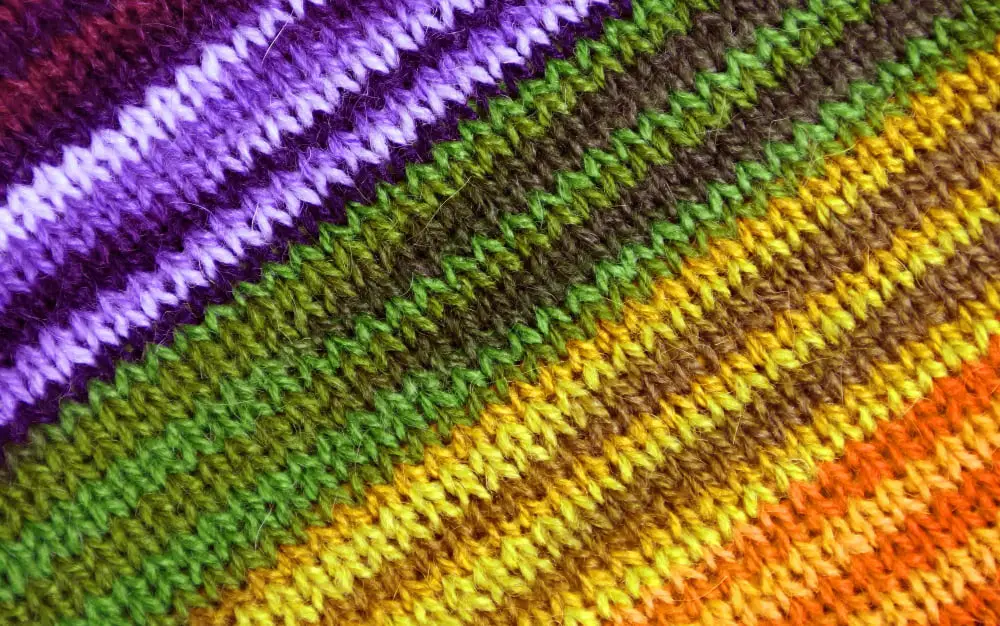
Color pooling, in essence, depends on the predictability of color sequence in the variegated yarn. The science behind it revolves around these key factors:
- Color Sequence: The color order and length in the yarn directly influence the pooling effect.
- Stitch Count: Each stitch uses a certain length of yarn. By adjusting stitch count, you can manipulate how colors pool.
- Tension: This can affect how much yarn each stitch uses, further playing into the color pool.
- Yarn Weight: Heavier yarn will have larger color sections which result in fewer color changes.
Through understanding these variables, the use of color pooling can be manipulated to create intentional and visually striking patterns. By altering certain factors, like tension and stitch count, and maintaining awareness of your yarn’s color sequence, you can experiment with pooling effects.
Guide to Planning Out Crochet Color Pooling
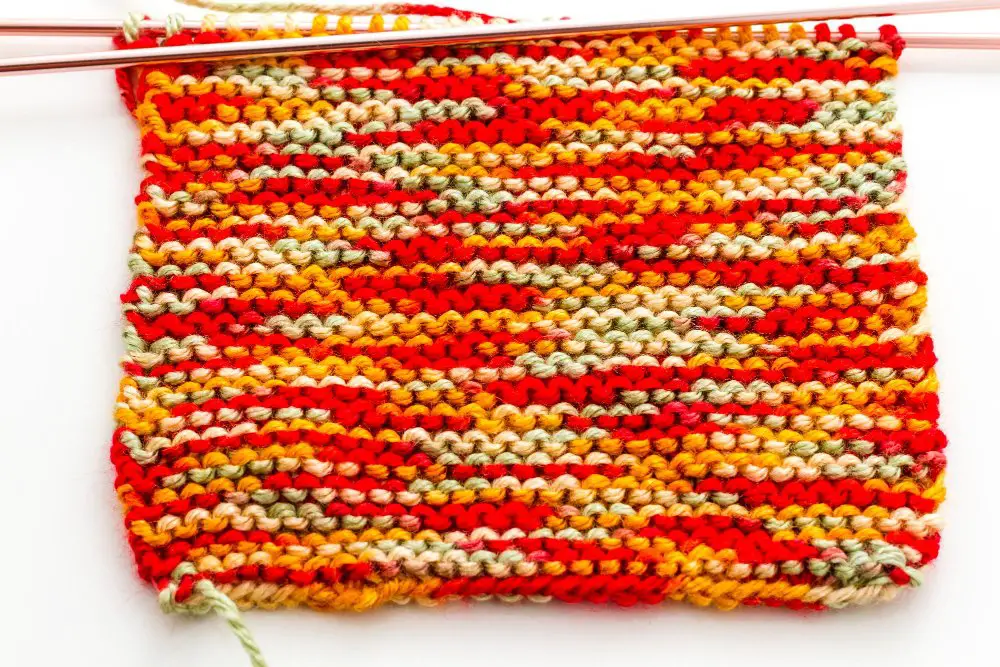
Begin your color pooling endeavor by choosing a variegated yarn where each color consistently repeats in order. Start with a chain in multiples of the number of stitches upon which the color change occurs, plus a few extra for adjustments.
Pay attention to tension as it’s key to successful pooling. Slight changes in tension can significantly alter the color distribution. If you notice the colors are shifting to the left, tighten your tension. If they’re shifting to the right, loosen up.
Gauge swatching plays a pivotal role. Make a gauge swatch larger than what is recommended on the yarn label to ensure repeatable color transitions.
Keep track of your stitch count in each color section. Repeat this same stitch count when you hit the same color in your following rows.
Interact with online tools for color pooling. Platforms like PlannedPool.com offer visual aids in planning out crochet color pooling, thus eliminating guesswork.
Reading your work is crucial. There’s a need to regularly study your fabric to maintain color sequence and stay on track.
Consider the stitch you use. Single crochet stitches often work best for pooling, but experimenting with half double or double crochet stitches can yield interesting results.
Practice is key. Crocheting is an art, and mastering color pooling requires frequent trials. Don’t hesitate to unravel the work, if necessary, to achieve the desired effect.
Mastering color pooling demands patience. Expect some trial and error before getting the hang of the technique, but with persistence, the outcome can be impressively striking.
Tips and Tricks for Controlling Color Pooling
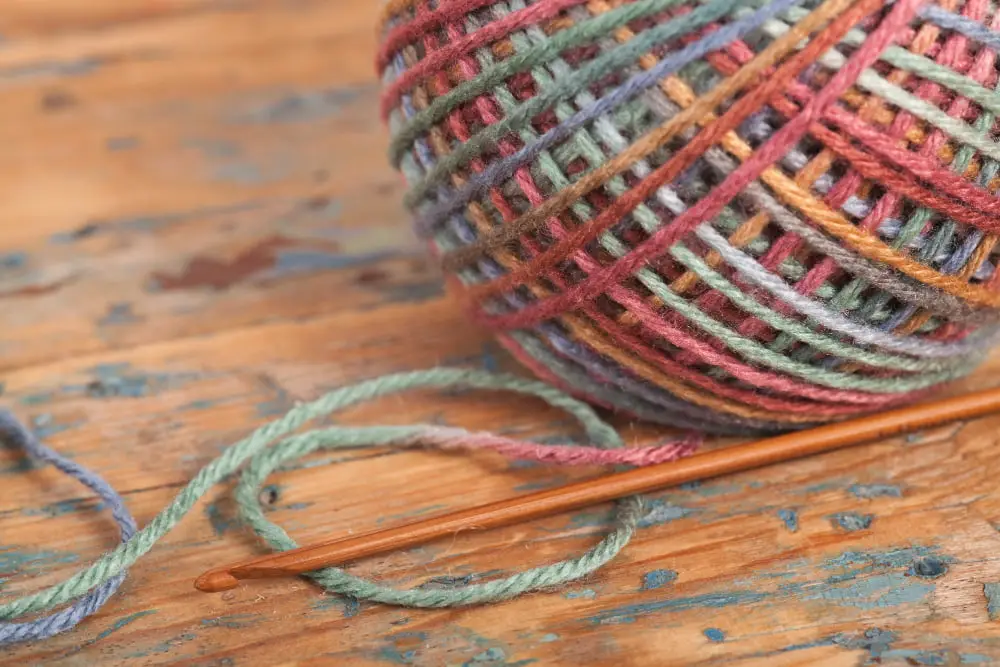
Control the tension of your stitches as variations can alter the pooling effect. The more consistent your tension, the better your color changes will line up.
Experiment with different crochet hooks or knitting needles. They come in a variety of materials (like aluminum or bamboo), and finding the one that works best with your yarn and tension can greatly impact color pooling.
Alter your starting point in the yarn. If the color pooling isn’t lining up to your preference, try starting from a different color section of the skein.
Use stitch markers to track your progress and help maintain regularity in the color changes.
Make use of a digital pooling planner. This tool can help preview the color distribution and pattern you’ll get based on your yarn and stitch count.
Remember that pooling can be unpredictable. Embrace it when the pooling effect turns out differently than intended.
Swatch. Always practice new skills before launching into a larger project. Use your swatches as navigation tools to understand color transitions and how different stitches affect them.
Finally, don’t be too hard on yourself if your desired effect doesn’t appear immediately. Mastering color pooling takes time, patience, and plenty of trial and error.
Different Stitches Best Suited for Color Pooling

Stitches that are distinctly identifiable and consistent often give the best color pooling results. Three common stitches advantageous for achieving vivid pooling effects include:
- Single Crochet Stitch: This stitch requires the least amount of yarn, allowing the colors to change more frequently within the pattern, thus leading to more intense pooled sections.
- Moss Stitch: A favorite among crocheters for pooling projects, the Moss stitch is a mix of single crochet and chain stitch, offering an appealing balance of color transition and texture.
- Linen Stitch: For knitters, the Linen stitch comes highly recommended for pooling. This stitch, also known as the fabric stitch, creates a woven effect that’s particularly effective at highlighting yarns with long color changes.
Despite these suggestions, it’s possible to achieve pooling with a variety of stitches. The key is to experiment with different stitches and tension until the desired pooling effect is achieved. Managing tension is crucial as loosening or tightening the stitches can significantly alter color placement and impact pooling. Different types of yarn and color sequences will respond differently to various stitches and tension levels. Always consult your yarn’s pooling guide if available for specific instructions.
Example Patterns Employing Color Pooling
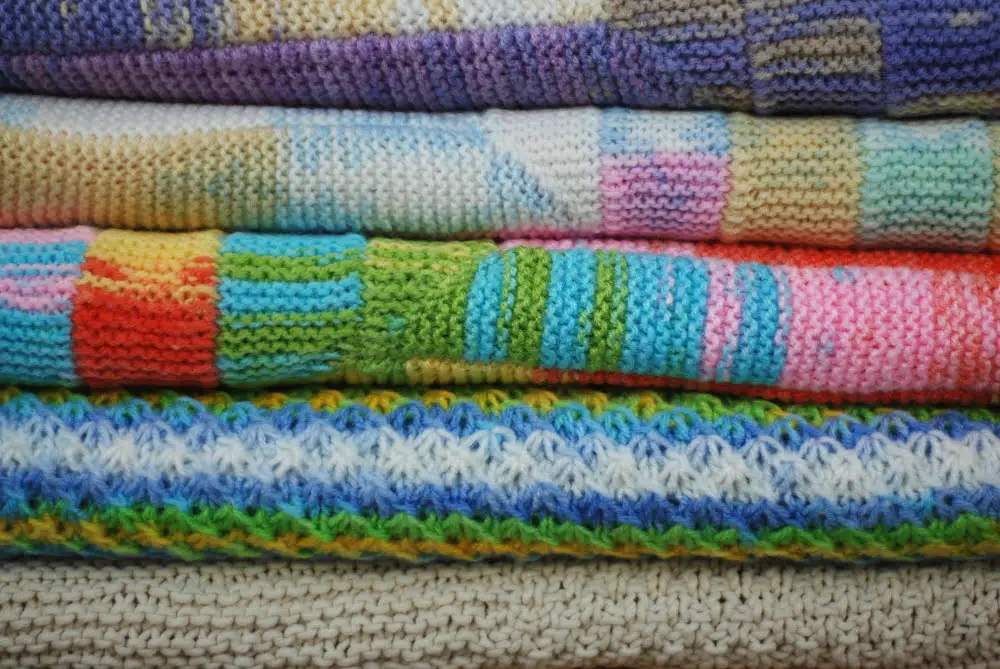
Featuring unique and engaging design variations, pooled color patterns can truly enhance your knitting and crocheting projects. Here are some examples:
- Argyle pattern: Employing planned pooling, this classic design generates an illusion of intertwined diamond shapes, best done with variegated yarn that has regular color changes. The alignment of colors creates the unique argyle design which tends to stand out in scarves and blankets.
- Checkerboard pattern: This pattern is executed by varying the tension of the stitch to manipulate the color pooling effect, creating a checkered design. This is mostly used in large pieces such as blankets and rugs.
- Stripes and waves: These patterns are suitable for beginners. They’re achieved when you use yarn with longer color sequences. The color changes resemble waves when worked in rounds or lines when worked flat.
- Zigzag or Chevron Pattern: Especially popular in afghans and throw rugs, the zigzag pattern can be achieved by careful observation of color pooling effects during the initial stages of the project.
Note, controlling color pooling is a skill that often requires a degree of trial and error, as each yarn and its color sequence can pool uniquely depending on stitch size, tension, and technique used. However, embracing this crafty challenge can lead to stunning, unique designs that truly showcase your creativity.
Resources for Mastering Color Pooling Techniques

First and foremost, there are high-quality books available on the topic, such as Artful Color, Mindful Knits: The Definitive Guide to Working with Hand-dyed Yarn. This book is a deep dive into the art and science of color pooling, offering clear explanations, visual guides, and plenty of patterns to practice.
In addition to books, several online platforms provide in-depth tutorials for mastering color pooling. Websites like Ravelry and Craftsy have forums and groups dedicated to this topic. Here, users share their experiences, offer tips, and help troubleshoot common problems.
For more interactive learning, YouTube is a treasure trove of step-by-step video tutorials. Channels like Marly Bird and Bag-O-Day Crochet have dedicated playlists for color pooling techniques.
Attending workshops and conventions can also prove beneficial. These venues give you the unique opportunity to learn from expert crafters in real-time, ask questions, and get hands-on practice. Many local yarn stores and craft centers offer these resources.
Last but not least, keep practicing your craft. Experiment with different pooling techniques, yarn types, and patterns. Keeping a crafting journal can be useful here, allowing you to note what combinations yield the best results or identify areas needing improvement. Just remember, like any new skill, mastering color pooling will take time and patience. Happy crafting!
FAQ
What is the pooling technique in knitting?
The pooling technique in knitting is a method where the short color repeats in variegated yarn are manipulated to create intentional patterns, ideally used in projects such as socks where the number of stitches typically remains consistent.
How do you stop yarn pooling?
To prevent yarn pooling, one can alternate between two skeins of yarn every row or every two rows, ensuring to carry the yarn up the inside of the piece when working in the round.
What is a pooling blanket?
A pooling blanket is a crochet blanket made with variegated yarn and specific stitches, such as the moss or granite stitch, in a planned way to create an automatic plaid or gingham pattern.
What is planned pooling yarns?
Planned pooling is a technique using variegated yarns that creates a tartan or harlequin effect through the strategic pooling of colors.
What factors can affect the outcome of color pooling in yarn crafts?
The outcome of color pooling in yarn crafts can be influenced by factors such as the yarn dyeing technique, yarn weight, the stitch used, and the individual tension of the crafter.
How does the choice of stitch impact color pooling in crochet?
The choice of stitch in crochet significantly influences color pooling as different stitches consume varying amounts of yarn, thereby affecting how colors from variegated yarns distribute and pool in the final project.
Are there specific types of yarn recommended for successful planned pooling?
Variegated yarns with carefully crafted color sequences are recommended for successful planned pooling in crochet and knitting projects.
